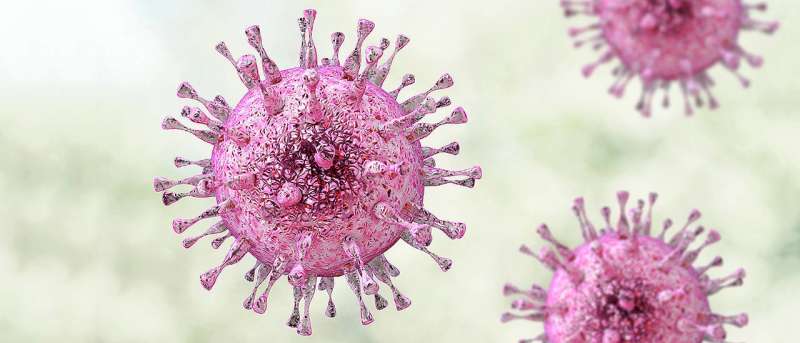Deeper insight into viral infections

An infection with cytomegalovirus is usually harmless for adults. However, during pregnancy, the virus can be transmitted to the unborn baby and cause malformations. Once the viruses have invaded a human cell, they start to produce large amounts of viral proteins. This includes more than 500 proteins and peptides, including 200 previously unknown to science.
This discovery was made possible by a new bioinformatics analysis method developed at the Department of Virology of Julius-Maximilians-Universität Würzburg (JMU) in Bavaria, Germany. The teams of Professor Lars Dölken and Professor Florian Erhard have published their method in the journal Nature Methods. The new technique is relevant for medical applications, because knowledge of the repertoire of viral proteins used to evade the immune system, for example, is crucial to fight infections or develop vaccines.
The JMU development allows the ribosomal activities to be captured much more accurately than before. All proteins and peptides are assembled at the numerous ribosomes of a cell. During viral infection, the ribosomes also synthesize all proteins the virus needs to reproduce. The assembly instructions are delivered by special messenger molecules, the mRNAs.
The researchers asked: which proteins and peptides are produced at the ribosomes of a cell, and in what amounts? How does this profile change due to the stress of viral infection? They addressed these questions using state-of-the-art high-throughput sequencing methods that use ribosomal profiling (Ribo-seq). These techniques visualize ribosomal activities, the so-called translation processes, as periodic patterns.
"Previously, a number of error sources often prevented the reliable detection of translation events when analysing Ribo-seq data," says Florian Erhard. What is more, in at least half of all mRNAs, shorter open reading frames (sORFs) precede the known open reading frames (ORFs). Very difficult to pinpoint in the measured data, they are however an important cellular regulating mechanism especially under stress.
The new bioinformatics procedure, called PRICE, substantially improves the identification of translation events. "Our method is capable of resolving even complex cases, for example overlapping ORFs or unusual start codons, with high accuracy. This has allowed us to determine all translated areas genome-wide with high accuracy for the first time," Professor Erhard explains.
As a result, the JMU team discovered various new cellular and viral peptides. Moreover, the researchers observed that hundreds of sORF peptides are efficiently presented at the cell surface by MHC-I molecules. "sORFs thus encode for a new class of antigens that can be recognized by our immune system," says Lars Dölken. "We therefore assume that sORFs are involved in immunological control mechanisms especially during virus infections and stress responses." All these findings open up new possibilities to better understand the effects of viral infections on the organism.
The PRICE method will have the strongest impact on fundamental research. Ribo-seq is a method that has been applied in almost all domains of biomedical research in recent years. "PRICE now enables us to analyse all existing and future dataset in much greater depth and with substantially improved accuracy," Dölken says. He believes that the gain is so big that it justifies re-analysing all previously published data.
To make this possible, the Würzburg scientists have provided their analysis tool as open-source software on the internet. They assume that their method will be used on a wide scale and become the international standard to analyse Ribo-seq experiments. They write, "We are convinced that the enhanced data analysis will deliver essential new insights in many fields of biomedical research."
In virology, the new method may contribute to getting a better understanding of cytomegalovirus. For example, it is still unknown why an infection with the pathogen causes severe damages in some unborn babies or transplant recipients, whereas others show no effects at all.
More information: Florian Erhard et al, Improved Ribo-seq enables identification of cryptic translation events, Nature Methods (2018). DOI: 10.1038/nmeth.4631
Journal information: Nature Methods
Provided by University of Würzburg



















